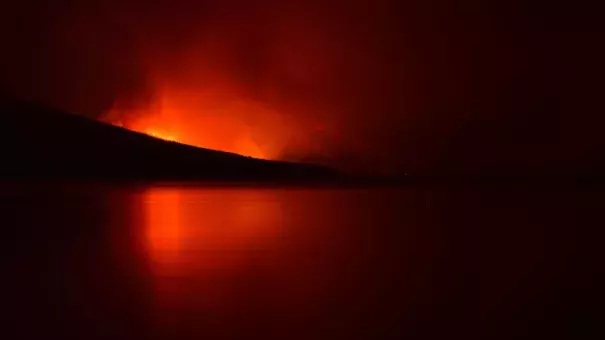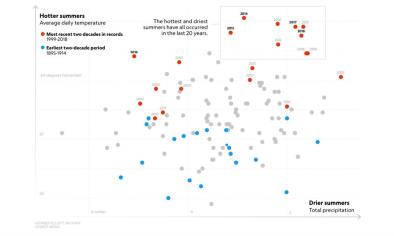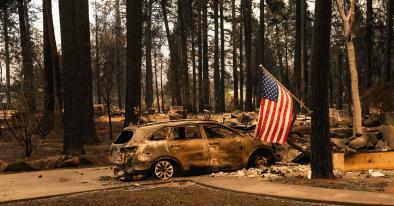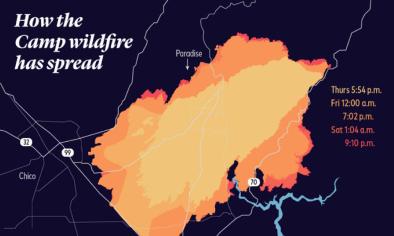Glacier National Park Is on Fire

Weeks after Yosemite Valley closed due to wildfires for the first time in decades, parts of Glacier National Park in Montana have been evacuated thanks to an explosive fire.
The Howe Ridge Fire “grew significantly” on Sunday according to a Facebook post by the park, the same day Glacier hit 100 degrees Fahrenheit for the first time in recorded history. The blaze has led the park to close portions of the iconic Going-to-the-Sun Road from Apgar to Logan Pass, and to evacuate Lake McDonald Lodge and Avalanche Creek Campground around 9 p.m. local time on Sunday.
...
Smoke continues to obscure views and fill the sky with noxious fumes. As ash and other particulate matter falls from the sky, it could also add insult to injury for Glacier’s glaciers. Rising temperatures have caused the glaciers to recede and disappear over the course of the park’s history. The dark particles from wildfire smoke will absorb more sunlight, acting as a dark blanket that could cause the glaciers to melt even faster.
Not only has it been hot, it’s been dry. According to the National Weather Service, Missoula—located about 130 miles south of Glacier—has gone 40 days without a lick of measurable rain. If the streak continues for seven , it will set a record for the longest dry stretch. Records go back to 1893 and the current record was set in [checks notes] 2017. Well then.
“There are some places where if you dropped a match on the ground, it would catch on fire,” Nicky Ouellet, the Flathead Valley reporter for Montana Public Radio, told Earther. “It’s an accumulation of dried grass, dried twigs that would act as kindling.”
...
I feel like a broken record saying this, but it bears repeating that we are witnessing a new era of wildfires in the West. Rising temperatures have lengthened wildfire season by drying out fuels and melting out snowpack earlier. The increasing heat also ups the odds of explosive fires like what we’ve seen from California to Montana to British Columbia.
Related Content





